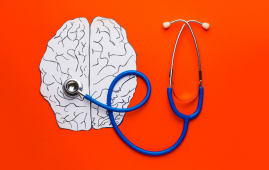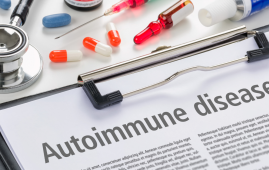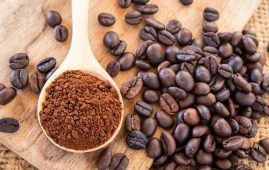

Elevated Dietary Inflammatory Index (DII) scores are positively correlated with greater insulin resistance characteristics in adult populations in the United States, according to a recent study published in Scientific Reports.
Dietary habits and inflammation
When the body is damaged or diseased, a natural process known as inflammation is set off, heightening host defense mechanisms and quickening the healing and recovery process. If healing is not possible, it might become permanent.
It is well-recognized that this persistent inflammation leads to vascular injury, including hypercoagulability, elevated platelet activation, and endothelial dysfunction. Over time, this raises the risk of stroke.
Previous studies have also demonstrated an increase in acute inflammatory mediators throughout a stroke, which makes them useful as biomarkers for predicting how the stroke will progress or the likelihood of complications.
The current study, which investigates the relationship between dietary sources of inflammation and the risk of stroke, was motivated by the realization that inflammation is the fundamental cause of stroke. Stroke prevention is essential since strokes are generally fatal or severely disabled, have a limited recovery period, and are often difficult to cure.
Increased levels of biomarkers of inflammation, such as C3, C-reactive protein, tumor necrosis factor (TNF)-α, and interleukin-6 (IL-6), are linked to diets high in chemicals that trigger inflammatory reactions. Scientists frequently use the Dietary Inflammatory Index (DII) metric to determine if a diet is pro-inflammatory.
It is currently unknown, nevertheless, how the DII and stroke risk are related. Diverse investigations have produced conflicting results. This may be due to elements like insulin resistance (IR), which raises the risk of stroke and is brought on by inflammatory dietary habits. Thus, the relationship between nutrition and stroke may be mediated by IR.
What verdicts were reached?
The National Health and Nutrition Examination Survey (NHANES) was the source of the data from 2005 to 2018. As such, the study’s foundation was a sizable population sample.
The researchers discovered that the total incidence of stroke was close to 3.9%. Being female, Black, less educated, drinking, and having a history of hypertension, diabetes mellitus, or high blood lipid levels were risk factors for stroke. In addition, the mean age, BMI, systolic blood pressure, insulin resistance, and blood sugar levels were all greater in stroke patients. But both their diastolic blood pressure and calorie consumption were decreased.
Higher Dietary Inflammatory Index scores were associated with the same traits.
Even after controlling for confounding variables, stroke patients still had higher DII scores. Those in the third and fourth quartile of DII scores had almost double the chance of having a stroke compared to those with the lowest values.
A similar dose-response association was also evident in the increasing trend of the likelihood of stroke incidence with higher DII scores.
The IR-related indicators also rise in tandem with rising DII scores. On the other hand, when evaluating stroke risk, there is no discernible interaction between HOMA-IR and DII scores. Neither the impact of DII on stroke risk nor its mediation by HOMA-IR appears to be amplified by this factor.
How does this correlate to earlier research?
Prior studies on DII have concentrated on the risk of cardiovascular disease (CVD) as opposed to stroke. For example, a more pro-inflammatory food pattern was linked to a 40% greater risk of cardiovascular disease (CVD) according to the Ravansar Non-Communicable Disease (RaNCD) study. Such a link for heart attacks was shown in another research, the Supplémentation en VItamines et Minéraux AntioXydants (SU.VI.MAX), but not for other types of CVD.
Others have drawn attention to the linear relationship between CVD risk and DII scores.
Only the risk of stroke, one particular kind of CVD, was examined in the current investigation. This research employs a bigger and more varied sample and aims to apply a more thorough method of analysis to guarantee the results are more accurate, even if they still reflect the conclusions of some earlier studies.
The authors note that their findings conflict with those of previous Australian and French research that did not find a link between DII scores and the risk of stroke. They speculate that this might be because of the small number of stroke patients, the differences in age and sex characteristics, and the dietary and cultural norms used in the various research.
Previous research is contradicted by the absence of interaction between DII and IR. This could be the case due to the link being evident only following a particular DII score threshold. Alternatively, as the researchers propose, it could only be seen if quartiles—rather than tertiles—are employed in DII analysis.
However, according to the study, there may be an independent relationship between stroke risk and both DII and IR. The DII scores may need to be calculated using additional dietary characteristics in light of future studies
What conclusions may be drawn?
The results of this investigation show a correlation between growing IR-related parameters and rising DII scores among adult Americans. “an increase in DII was consistently associated with an increased risk of stroke.” This emphasizes how important it is to suggest an anti-inflammatory diet as a successful stroke prevention method.
For More Information: Associations between dietary inflammatory index and stroke risk: based on NHANES 2005–2018, Scientific Reports, https://www.nature.com/articles/s41598-024-57267-9
more recommended stories
 Parkinson’s Disease Care Advances with Weekly Injectable
Parkinson’s Disease Care Advances with Weekly InjectableA new weekly injectable formulation of.
 Brain’s Biological Age Emerges as Key Health Risk Indicator
Brain’s Biological Age Emerges as Key Health Risk IndicatorClinical Significance of Brain Age in.
 Children’s Health in the United States is Declining!
Children’s Health in the United States is Declining!Summary: A comprehensive analysis of U.S..
 Autoimmune Disorders: ADA2 as a Therapeutic Target
Autoimmune Disorders: ADA2 as a Therapeutic TargetAdenosine deaminase 2 (ADA2) has emerged.
 Is Prediabetes Reversible through Exercise?
Is Prediabetes Reversible through Exercise?150 Minutes of Weekly Exercise May.
 New Blood Cancer Model Unveils Drug Resistance
New Blood Cancer Model Unveils Drug ResistanceNew Lab Model Reveals Gene Mutation.
 Healthy Habits Slash Diverticulitis Risk in Half: Clinical Insights
Healthy Habits Slash Diverticulitis Risk in Half: Clinical InsightsHealthy Habits Slash Diverticulitis Risk in.
 Caffeine and SIDS: A New Prevention Theory
Caffeine and SIDS: A New Prevention TheoryFor the first time in decades,.
 Microbial Metabolites Reveal Health Insights
Microbial Metabolites Reveal Health InsightsThe human body is not just.
 Reelin and Cocaine Addiction: A Breakthrough Study
Reelin and Cocaine Addiction: A Breakthrough StudyA groundbreaking study from the University.

Leave a Comment